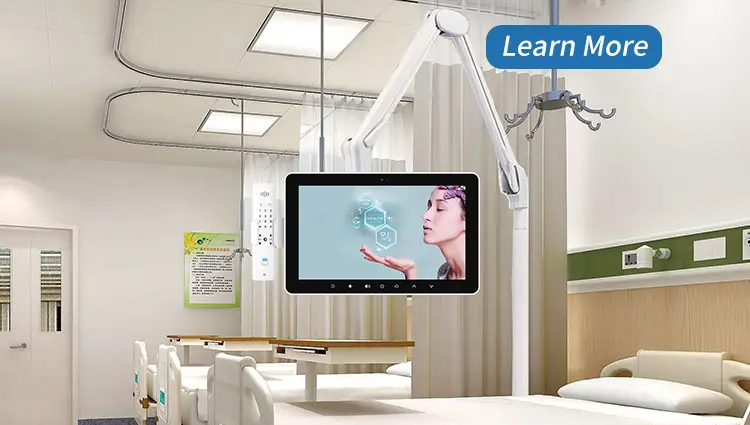In the modern healthcare landscape, patient satisfaction and engagement are paramount. Patient infotainment systems have emerged as a revolutionary solution to enhance the hospital experience for patients while also providing valuable tools for healthcare providers. In this comprehensive guide, we delve deep into the world of patient infotainment systems, exploring their benefits, features, implementation, and impact on healthcare delivery.
Understanding Patient Infotainment Systems
Patient infotainment systems are advanced technological platforms designed to deliver entertainment, education, communication, and healthcare services to patients during their hospital stay. These systems typically consist of a user-friendly interface accessible via a bedside terminal or personal device, such as a tablet or smartphone. Through innovative software and interactive functionalities, patient infotainment systems offer a wide range of services tailored to meet the diverse needs of patients and healthcare facilities.
Benefits for Patients
Enhanced Comfort and Convenience
One of the primary benefits of patient infotainment systems is the enhancement of patient comfort and convenience. By providing access to entertainment options such as movies, music, games, and internet browsing, these systems alleviate boredom and reduce feelings of isolation during hospitalization. Patients can personalize their experience and stay connected with loved ones through video calls and messaging features, fostering a sense of normalcy and well-being.
Empowerment Through Education
Patient infotainment systems empower patients with valuable health education resources and information. Interactive tutorials, educational videos, and access to reputable medical content enable patients to become active participants in their care journey. By promoting health literacy and self-management skills, these systems contribute to better decision-making and improved health outcomes.
Seamless Communication
Effective communication is essential for delivering quality healthcare services. Patient infotainment systems facilitate seamless communication between patients, caregivers, and medical staff through various channels. Features such as nurse call integration, appointment scheduling, and real-time feedback mechanisms streamline communication workflows and enhance overall patient experience.
Advantages for Healthcare Providers
Streamlined Operations
Patient infotainment systems streamline hospital operations by automating administrative tasks and optimizing resource allocation. Integrated software solutions enable healthcare providers to manage patient workflows, access electronic health records, and track clinical metrics more efficiently. This streamlined approach improves staff productivity, reduces administrative burden, and enhances workflow efficiency.
Data-driven Insights
Data analytics play a crucial role in modern healthcare decision-making. Patient infotainment systems generate valuable insights through data collection and analysis, providing healthcare providers with actionable information to improve care delivery and patient outcomes. By leveraging data-driven insights, healthcare facilities can identify trends, monitor patient satisfaction, and implement targeted interventions to enhance quality of care.
Patient Engagement and Satisfaction
Patient engagement is a key determinant of healthcare quality and patient satisfaction. Patient infotainment systems promote active engagement by offering interactive features, personalized content, and educational resources. Engaged patients are more likely to adhere to treatment plans, participate in their care, and report higher levels of satisfaction with their hospital experience. By prioritizing patient engagement, healthcare providers can enhance patient satisfaction scores and reputation.
Implementation Considerations
Customization and Integration
When implementing a patient infotainment system, healthcare facilities must prioritize customization and integration with existing infrastructure. Tailoring the system to meet the specific needs and preferences of patients and staff is essential for maximizing adoption and usability. Seamless integration with electronic health records (EHR) systems, communication platforms, and hospital workflows ensures smooth interoperability and enhances system functionality.
Training and Support
Effective training and support are critical for successful adoption and utilization of patient infotainment systems. Healthcare providers should invest in comprehensive training programs to educate staff on system features, functionalities, and best practices. Ongoing technical support and troubleshooting resources ensure that users can navigate the system confidently and address any issues promptly, minimizing disruptions to patient care.
Continuous Improvement
The healthcare landscape is constantly evolving, necessitating continuous improvement and innovation. Healthcare facilities should actively seek feedback from patients, caregivers, and staff to identify areas for improvement and refinement. Regular system updates, feature enhancements, and performance optimizations ensure that patient infotainment systems remain relevant, responsive, and aligned with evolving patient needs and industry trends.
Conclusion
Patient infotainment systems represent a transformative solution for enhancing the hospital experience for patients and healthcare providers alike. By combining entertainment, education, communication, and healthcare services into a unified platform, these systems empower patients, streamline operations, and improve overall quality of care. As healthcare continues to evolve, patient infotainment systems will play an increasingly vital role in shaping the future of patient-centered care delivery.

